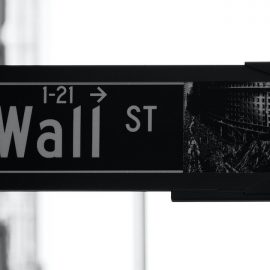

This article is an excerpt from the Shortform book guide to "Business Adventures" by John Brooks. Shortform has the world's best summaries and analyses of books you should be reading.
Like this article? Sign up for a free trial here .
What happens when stockholders don’t care about anything other than making money? Why should they attend annual stockholder meetings?
Business complacency often happens once a company has achieved success. John Brooks warns against this apathy—particularly from stockholders who take little or no interest in business decisions—as it can cause you to be blind to internal weaknesses and external threats.
Keep reading to learn more about complacency on the behalf of stockholders and the importance of annual stockholder meetings.
Stockholder Complacency in Business
In his discussion about business complacency, Brooks reflects on how stockholders theoretically hold the power in corporations since they can vote for the board of directors and hold them accountable. However, he notes that most stockholders have no interest in exercising this power—they’re largely docile as long as they receive their dividends. As Brooks made the rounds of stockholders’ meetings in 1966, he found that only a fraction of stockholders ever attended the annual stockholder meetings and, of those who did, most raised no substantive issues with the companies’ management.
(Shortform note: Stockholders’ meetings are open to all shareholders of a company. They follow a set format and their agenda typically includes an update on the company’s performance, the election of directors, and a forum where shareholders can speak up.)
At these meetings, only a handful of “professional stockholders” took it upon themselves to be the voice of the people and ask difficult questions or object to management decisions. Unlike the average stockholder, these professional stockholders kept abreast of corporate affairs and took to the floor at the annual stockholder meetings, challenging the board on issues that they deemed important. However, some of these professionals weren’t the best representatives of their fellow stockholders. For example, one woman consistently brought up irrelevant points and wore elaborate costumes, turning the meetings into a farce.
With stockholders generally being apathetic and their self-proclaimed representatives being somewhat inadequate, the board hardly ever took stockholders’ input into consideration. Thus, Brooks writes, even when stockholders wielded the power, management still made all the decisions.
| The Rise of Nonvoting Shares During Brooks’s time, all stockholders had voting shares, but many changes have happened since then. Since the 1980s, the NYSE has allowed companies to issue dual-class shares (and later, multi-class shares), meaning they could issue both voting and nonvoting stock—the latter stock, as the name suggests, doesn’t allow stockholders to vote on company-related matters. In 2017, Snap Inc. became the first company to issue purely non-voting shares in its initial public offering; other technology companies followed suit. This move has been hotly debated. Companies typically opt for purely non-voting shares so that corporate insiders (usually the founders) can retain control. Proponents of nonvoting shares argue that insiders can more aggressively pursue their vision for the company without too much risk or pushback. However, critics contend that nonvoting shares undermine corporate governance, leading to a lack of oversight and opening the door to possible abuses by insiders. For this reason, the S&P 500 (among others) has opted to exclude such shares from its index. |

———End of Preview———
Like what you just read? Read the rest of the world's best book summary and analysis of John Brooks's "Business Adventures" at Shortform .
Here's what you'll find in our full Business Adventures summary :
- A collection of essays about the unpredictability of corporations and Wall Street
- How businesses and economies can rise and fall based on people’s behavior
- A look at the major events that shaped the financial world as we know it






